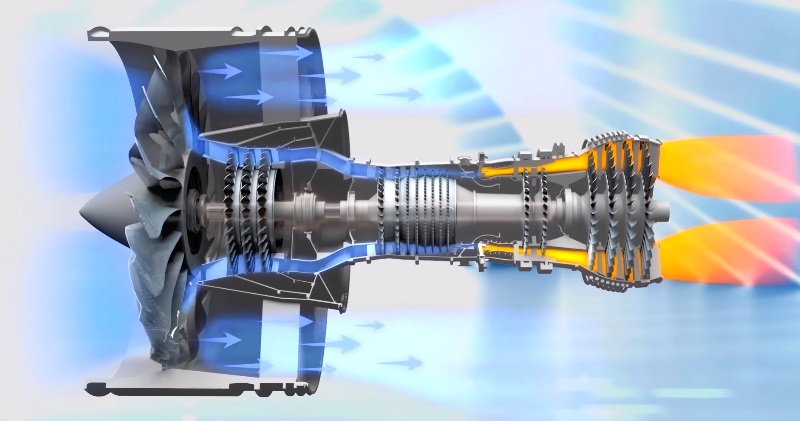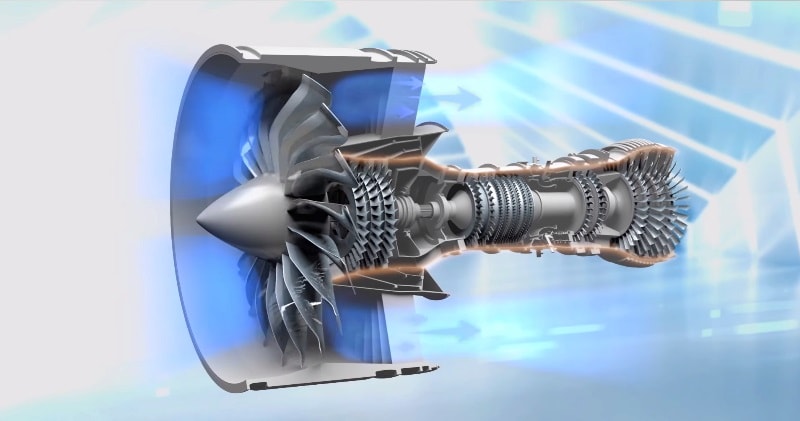A jet engine is a machine that converts energy-rich, liquid fuel into a powerful pushing force called thrust. The thrust from one or more engines pushes a plane forward, forcing air past its scientifically shaped wings to create an upward force called lift that powers it into the sky. That, in short, is how planes work—but how do jet engines work?
source: nasa / image: Pratt & Whitney
All jet engines, which are also called gas turbines, work on the same principle. The engine sucks air in at the front with a fan. A compressor raises the pressure of the air. The compressor is made with many blades attached to a shaft.
source: nasa / image: Pratt & Whitney
The blades spin at high speed and compress or squeeze the air. The compressed air is then sprayed with fuel and an electric spark lights the mixture. The burning gases expand and blast out through the nozzle, at the back of the engine.
Advertisement
As the jets of gas shoot backward, the engine and the aircraft are thrust forward. As the hot air is going to the nozzle, it passes through another group of blades called the turbine. The turbine is attached to the same shaft as the compressor. Spinning the turbine causes the compressor to spin.
The air goes through the core of the engine as well as around the core. This causes some of the air to be very hot and some to be cooler. The cooler air then mixes with the hot air at the engine exit area.The engine takes in a large volume of air. The air is heated and compressed and slowed down. The air is forced through many spinning blades. By mixing this air with jet fuel, the temperature of the air can be as high as three thousand degrees. The power of the air is used to turn the turbine. Finally, when the air leaves, it pushes backward out of the engine. This causes the plane to move forward.












